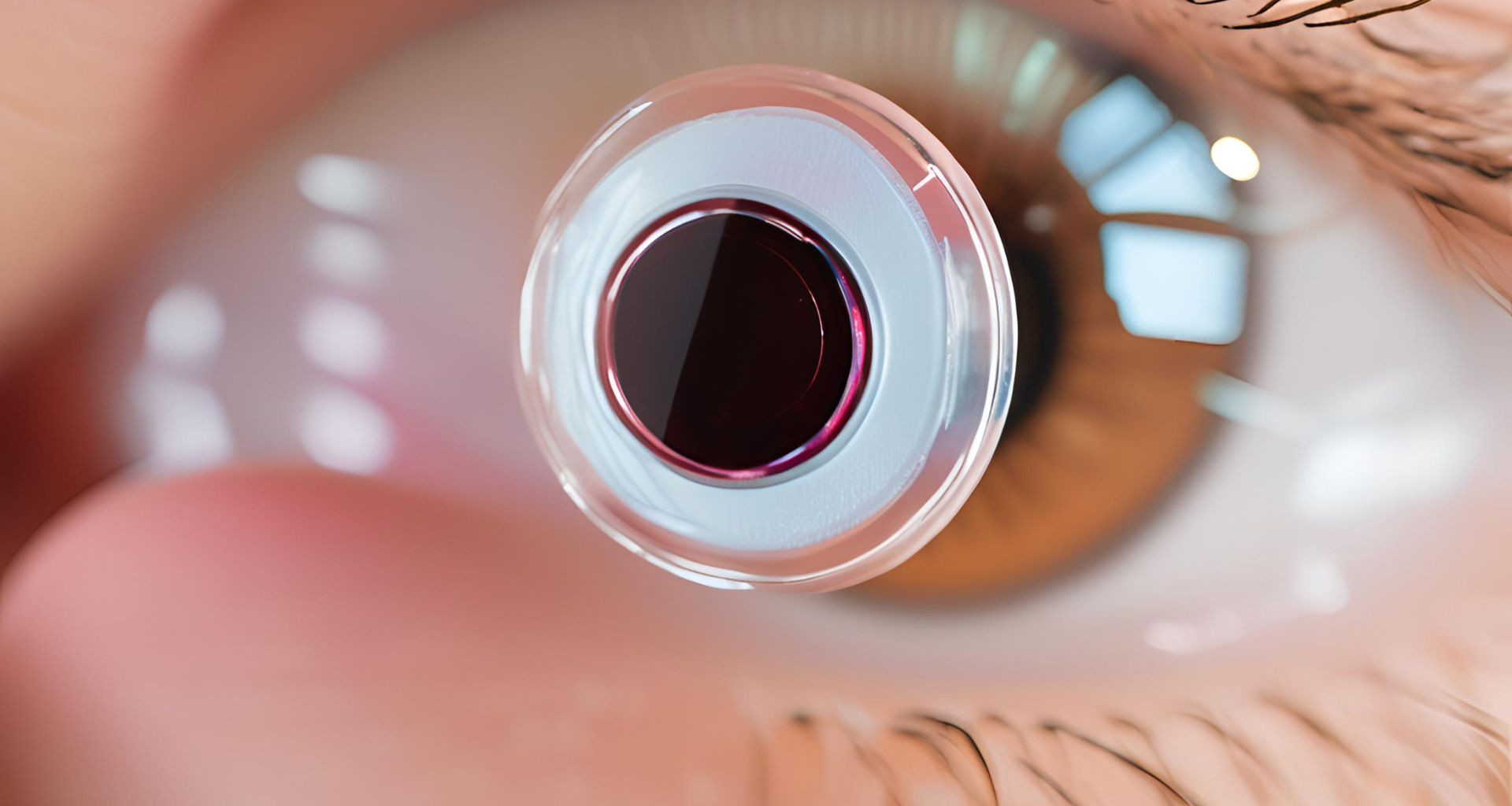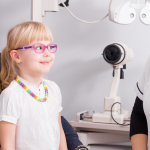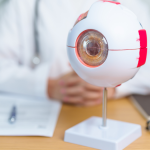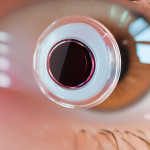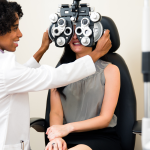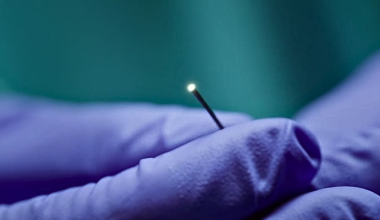Vision is a sense that many of us take for granted – until it starts to fade. The fact is that an estimated 57 per cent of Canadians 20 years or older need vision correction, with 9.2 per cent of the population wearing contact lenses.
The older you get, the more vision starts to diminish, with a whopping 80 per cent of people 50+ needing help to see. Fortunately, vision correction options abound, with the first step being an eye exam by an optometrist to diagnose the extent of the problem.
Contact lenses; a good choice for you?
Just as with eyeglasses, regular contact lenses help people with common vision problems such as nearsightedness (myopia), farsightedness (hyperopia), age-related farsightedness (presbyopia) and astigmatism. However, because they sit directly on the eye’s surface, contact lenses are more effective at vision correction than eyeglasses.
People who suffer from the vision problems mentioned above but who have healthy eyes overall are suitable candidates for contact lenses. They are not recommended for those who suffer from constant eye infections, severe allergic reactions and issues with eye lubrication.

Contact lenses are either soft or rigid; which one is prescribed for you will depend upon the kind of vision problem being corrected.
Despite the nerve-wracking task of placing contacts directly on the eye’s surface, many people wear contact lenses because they provide crisper and clearer vision than eyeglasses, won’t slide down the nose, don’t get smudges or interfere with an active lifestyle, and you can wear any sunglasses you want!
There are even lenses that you wear only while you’re asleep. They work by reshaping your eye, so you don’t have to wear any vision correction while you’re awake.
And with smart contacts on the horizon, this may be the time to consider wearing contacts lenses as many of the new products entering the market help with more than just correct vision.
The future of contact lenses
Contacts are getting smarter. With the goal of making life easier, researchers are creating and testing products with all sorts of crazy abilities.
Transition Contacts
One that’s available for purchase but hard to find is transition lenses. These contact lenses automatically brighten and darken to regulate how much light enters your eye. However, it’s important to note that because the contact only covers the iris, they don’t protect the entire eye from UV rays. If you want to protect your entire eye as well as the skin around the eyes, sunglasses are still the way to go.
Allergy Contacts
A new lens that has gone through multiple rounds of trials and may be close to approval is an allergy lens. Hay fever affects up to 25 per cent of Canadians, often causing itchy eyes.
Normally a nuisance, itchiness can make it impossible to keep your contacts in when all you want to do is rub your eyes. These special lenses release antihistamines to reduce irritation, though it has been reported to cause a slight sting upon insertion.
Seeking approval from the FDA first, it may take longer for the product to reach Canadian shelves.
Blood Sugar Monitor
Another lens currently in production would double as a glucose monitor. Aiming to make blood sugar monitoring as easy as the blink of an eye, the lens would test the glucose concentration in tears and share the results on a built-in display.
Previous iterations have been too stiff, causing issues with wearability. Researchers are trying to use new materials and incorporate the technology into a soft lens instead of a rigid one making them easier and more comfortable to wear. As of publication, these lenses have not started human testing.
Glaucoma Safe
Glucose isn’t the only thing smart contacts can detect. Researchers are developing contact lenses that can detect pressure in the eye and even release glaucoma medication. There are several different kinds of glaucoma, the most popular affecting more than 250,000 Canadians.
The ultimate goal of this lens is to stop glaucoma related blindness. Glaucoma often doesn’t present with many symptoms until vision loss is irreversible. One of the leading causes of blindness in Canada, almost 300,000 Canadians have glaucoma related blindness.
Read The Health Insider’s article about glaucoma warning signs: Don’t let Glaucoma steal your sight | The Health Insider
Ortho-K (Corneal Reshaping/ Refractive Lens)
Already on the market, there’s a contact lens that’s an alternative to correcting nearsightedness. A non-surgical process, orthokeratology (ortho-K), or corneal refractive therapy (CRT), treatment involves wearing custom-fitted rigid gas-permeable contact lenses for specific periods of time. They reshape the cornea to correct myopia, but not when you’re awake.
For one to three months, wear the lenses during sleep and remove them when you wake. The goal is to eventually reduce the corrective contact lens wear to two to three nights a week.
Most people start to see a difference in their vision within a few days and significant improvement within several weeks. If you skip nights, you may notice your vision reverting towards its original state.
Orthokeratology does not permanently change the shape of the cornea. It will return to its normal shape a few months after stopping the treatment.
People with mild to moderate myopia are good candidates for ortho-K. Additionally, several studies show that, compared with nearsighted kids who wear eyeglasses or regular contact lenses, nearsighted kids who undergo several years of orthokeratology may end up with less myopia as adults.
This therapy is also a solid option for people who participate in contact sports or work in dusty environments and therefore can’t wear contacts or eyeglasses.
Fitting ortho-k lenses requires more expertise than fitting regular contact lenses. It is more time-consuming as you’ll need a series of appointments with your optometrist and potentially multiple sets of lenses.
The cost varies significantly depending on the type and degree of your refractive error and whether you are choosing this solution for long-term control of myopia. Expect to spend from $1,500 and upwards annually. Ortho-K is not covered by provincial Medicare but part of the fee may be covered in private insurance plans. Check with your provider before proceeding.
Cost of contact lenses
Contact lenses come in 30-count (one-month) or 90-count (three-month) packs. Pricing for prescribed contacts can range from $60 to $150 per box. Due to their complexity, multifocal lenses will be more costly than single-vision lenses. Prices can range from $61.99 to $168.99 per box. They are not covered by provincial Medicare but may be covered by your private insurance. Check with your provider to confirm.
Regular contact lens wearers need to see their optometrist at least once a year for a full examination, so make sure you budget for this. Your vision and therefore the fit for your contacts may change. Eye exams help ensure that your prescription is current and that your lenses provide the proper vision correction.
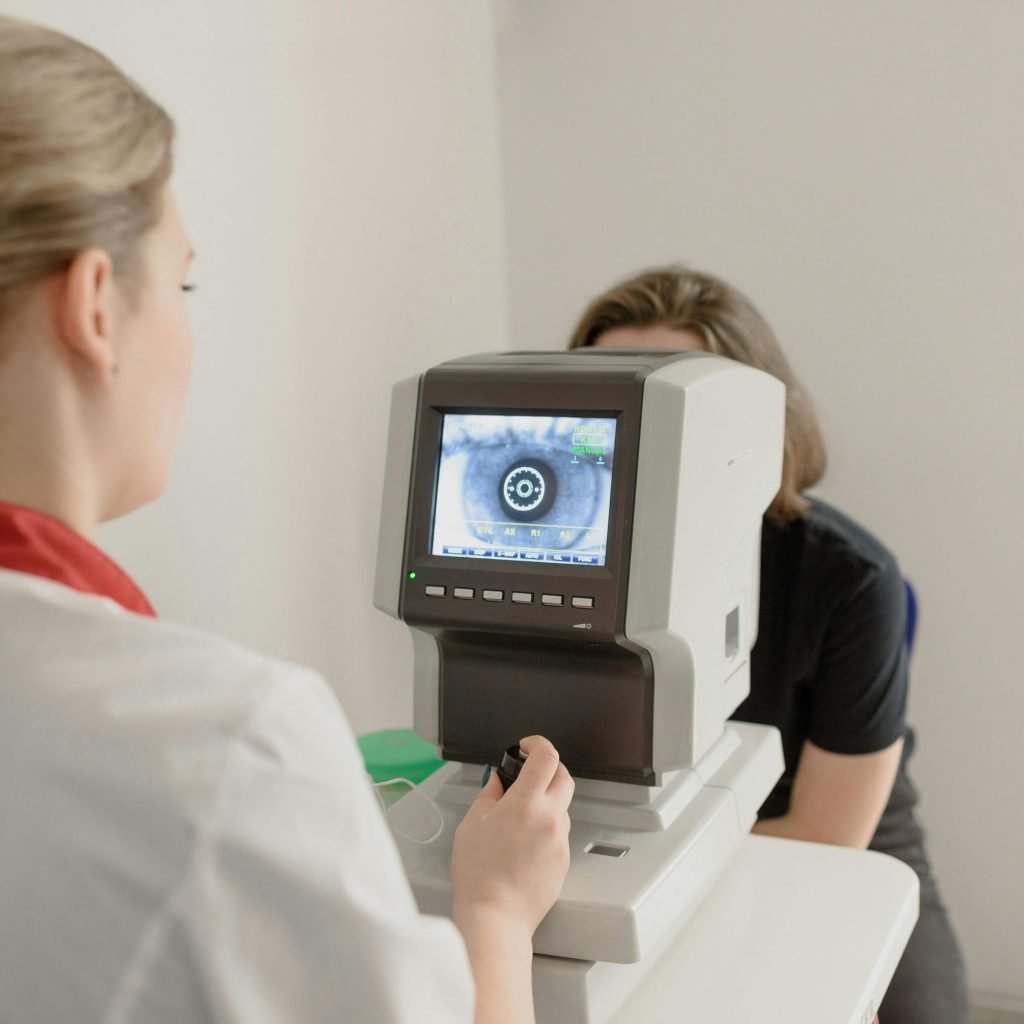
Make sure you also budget for cleaning solution for your lenses. It is likely that contacts will cost more than eyeglasses on an annual basis. When you receive your diagnosis, it’s important to understand the full costs associated with contact lenses before committing.
Risks of wearing contact lenses
Contact lenses are medical devices that have both benefits and risks. The most common eye issues with wearing contact lenses are itchiness, dryness, burning, excessive tearing, sensitivity to light, and occasional blurred or distorted vision.
Lifestyle choices can cause side effects. Smoking increases your chances of developing corneal ulcers, no matter the type of contacts you wear. More severe issues can include eye infections stemming from improper care or cleaning, an increased risk of limbal stem cell deficiency, or ulcerative keratitis from contraindicated extended use.
Because dry eyes can be caused by hormones, medication or certain diseases, you may find you cannot wear contacts if you take hormonal birth control, are going through menopause, are pregnant, consume alcohol, fly frequently or take medication that can cause dry eyes. Aside from being very uncomfortable, dry eyes increase the risk that the contact lens will scratch the cornea.
To reduce your risk of sustaining eye problems caused by contacts, only wear contacts prescribed and fitted by an eye care professional. Follow the directions from an eye care professional on how to clean and care for your contacts and eyes.
Whether you choose to wear eyeglasses or contacts, remember that the health of your eyes is the number one priority when figuring out which is best suited for you.
~ Read more from The Health Insider ~
- Optometrist vs. Ophthalmologist: Who to See, When and What Your Province Actually CoversStop guessing! This essential guide clarifies the roles of optometrists, ophthalmologists, and opticians, details provincial coverage for you, and sets your eye exam schedule.
- Diabetes and Vision: Why Early and Regular Eye Exams Can Save Your SightA new survey finds most Canadians unaware that diabetes can damage vision. Early diagnosis could prevent up to 90% of sight loss.
- Smart Contacts and Ortho-K: Innovative Contact Lenses for Ease Contacts are getting smarter. With the goal of making life easier, researchers are creating and testing contact lenses with all sorts of crazy abilities.
- Six Things You Can Do to Help Reduce Risk of Age-Related Macular DegenerationAge is the biggest and unalterable risk factor for AMD, but there are many lifestyle choices you can make to reduce your risk.
- 75% of Vision Loss is Preventable and TreatableMany adult Canadians do not get regular eye exams because of the out-of-pocket cost, but did you know that this may raise your risk of serious eye disease as you age?
- Dry Eye: Insights and Solutions for CanadiansWhile not usually serious, dry eye can profoundly impact a person’s life. Let’s examine what causes dry eye, its symptoms, and treatments available here in Canada.
The information provided on TheHealthInsider.ca is for educational purposes only and does not substitute for professional medical advice. TheHealthInsider.ca advises consulting a medical professional or healthcare provider when seeking medical advice, diagnoses, or treatment. To read about our editorial review process click here.

